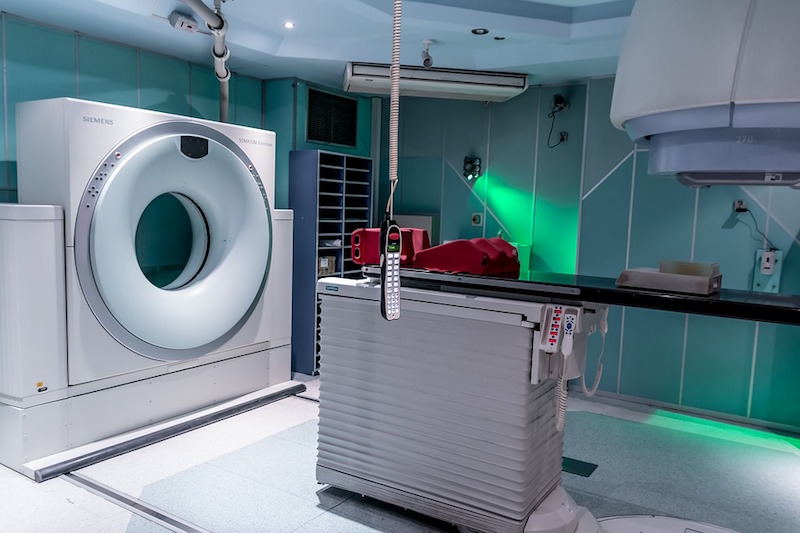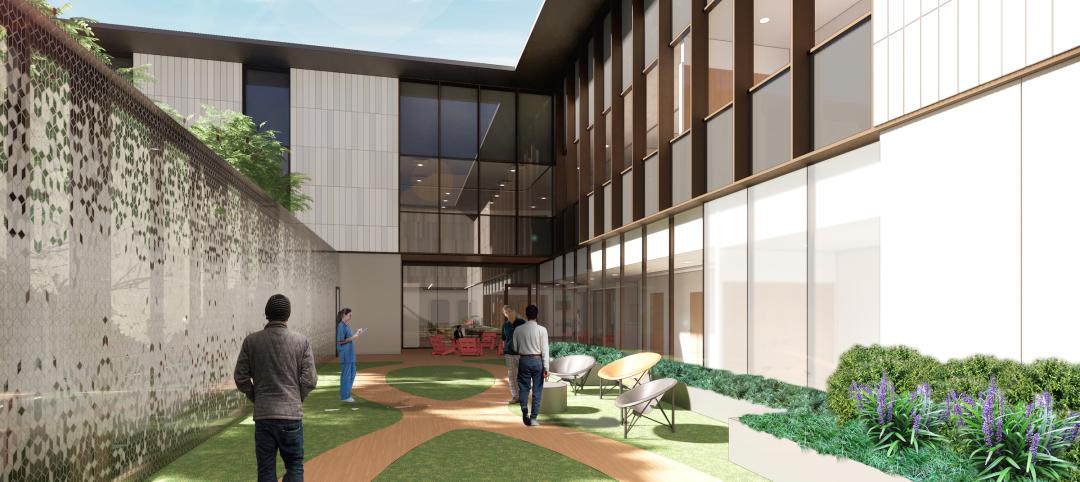E4H Environments for Health Architecture, an architecture firm focused exclusively on healthcare, recently released seven predictions for healthcare facility design trends in 2018.
“From Emergency Departments to micro-hospitals, to the amenities in and locations of hospitals, the year ahead will see continued changes in how healthcare providers are designing and equipping their facilities to meet both patient and market needs,” said Jason Carney, AIA, E4H Partner, in a release. “Add in the pressures of rapidly evolving regulations and payment models, and healthcare design has never been more dynamic than it is now.”
Following are seven top design trends in healthcare for 2018, as envisioned by E4H partners from across the country:
Behavioral Health Drives Emergency Department Reconfigurations
Reflecting both the national opioid-abuse crisis and rising awareness of mental health conditions, hospitals are recognizing an intense need to accommodate cognitively impaired patients more effectively and more sensitively. Hospital leaders are seeking a careful balance in separating patients who pose a risk to themselves and others from the general Emergency Department (ED) population, while ensuring all patients are treated with compassion and dignity. At facilities such as Connecticut’s Waterbury Hospital and Newport Hospital in Rhode Island, areas within the ED are being designed for people and families who are experiencing or approaching a crisis requiring behavioral-health or addiction-management intervention. Because patients with cognitive impairment and behavioral issues often require longer stays in the ED than the general population, an emerging best design practice is adding features for them such as bathroom showers, places to securely store belongings, and access to decompression space.
Virtual Reality Becomes a Critical Planning Tool for Hospital Design
In 2018, more healthcare clients will benefit from virtual reality (VR) technology as they partner with architects to imagine and design complex spaces like operating rooms. VR technology is becoming smaller and more mobile, enabling architects to take VR equipment directly to end users in order to harvest their insight interactively and obtain immediate design feedback. The ability to use VR goggles and headsets to visualize space in three dimensions and coordinate both the room design and placement of equipment is improving facility efficiency and safety. VR headset technology breaks through the traditional limitations of a screen to put people “in” the design to experience, evaluate, and comment on everything from casework configurations to outlet quantities and furniture arrangements.
Microhospitals
According to US News & World Report, microhospitals are now operational in 19 states across the U.S., providing services similar to larger hospitals (ED, pharmacy, lab, radiology, and surgery) in a smaller envelope. This model offers greater accessibility and convenience for residents and is a cost-effective market growth strategy for providers. These mini-hospitals are roughly 15,000 to 50,000 square feet, open 24/7, and maintain between five and 15 inpatient beds for observation and short stay use. Recent changes to Centers for Medicare and Medicaid Services policy regarding reimbursement schedules for satellite facilities, authorizing microhospitals with dedicated emergency departments as eligible for both 340B discounted drug pricing and the Outpatient Prospective Payment System, will make microhospitals an increasingly popular option. E4H Architecture has designed 28 micro-hospitals in Arizona, Colorado, Texas, Louisiana, and Ohio.
Make Space for Telehealth
Both for patients at home and those in medical facilities, telehealth is an increasingly integral mode of healthcare delivery. Healthcare consulting firm Sg2 projects that in the next two years, the volume of virtual healthcare patients will rise 7 percent and in-home healthcare services will rise 13 percent. Installation of sophisticated patient monitors with robust communications platforms is enabling patients to consult seamlessly with physicians and care team professionals. Increasingly, telehealth is being utilized for specialty services like radiology, psychiatry, and dermatology as a way to obtain a specialist’s opinion without the inconvenience of an additional office or hospital visit. Healthcare facilities should start thinking now about how to best incorporate telehealth services into their master plan. Telehealth affects facility design in several ways, including how treatment rooms are configured to accommodate remote consultation and providing infrastructure for the technological equipment. Lighting, privacy, and aesthetics of rooms used for confidential telehealth consultations are all important concerns that need to be addressed by architects and designers. Telehealth technology is also transforming lobbies, common spaces, and admissions areas. Increasingly these areas are being designed to include accessible areas for kiosks or tablets from which patients can register, view their records, or videoconference with a provider.
Hospitals Take a Cue from the Hospitality Industry
The healthcare industry is embracing the trend of removing out-patient services from traditional, larger hospitals and moving them to more consumer-friendly environments. In some cases, this trend has been shown to create operational efficiencies and improve clinical outcomes, such as decreased re-admittance rates. E4H recently worked with a New York hospital to convert a 27-unit physician and nurse dormitory into temporary housing for immunocompromised patients. Procedures like bone-marrow transplants (BMTs) exemplify a unique need for extended care: In the first phase of treatment (surgery and post-op), those undergoing BMTs must be served as hospital inpatients. In the second phase, patients are vulnerable to infection and require monitoring for complications, but typically do not require a full suite of hospital inpatient services. For this second phase, the New York hospital administrators worked with architects to serve this “in-between” population, providing a facility that feels more like a hotel than hospital, with cozier interior design; private, suite-style rooms; and specialized air and water filtration systems to protect immune-suppressed patients. Rather than an inpatient charge nurse, a uniquely skilled concierge service provides front-desk response to at the front desk of the patients’ daily needs.
Move to Malls
As the delivery of healthcare continues to improve, an increasing number of same-day services and procedures may be performed outside hospitals, in community locations chosen for ease of access and improved customer convenience. Established retail locations are and will become even more attractive to developers of microhospitals, outpatient imaging, urgent care and ambulatory surgery centers, and medical office buildings. This approach serves not only convenience-minded patients but also providers interested in growing market share. Trends that Walmart and Panera consider for their locations–demographics, quality of highway or transit access, parking– all translate to healthcare as well. In Kingston, NY, E4H is helping Health Quest to transform a former Macy’s retail space into a new state-of-the-art outpatient medical services facility. It will enable consumers to access urgent care, ambulatory surgical care, primary care, diagnostic imaging, and oncology services in an easy-to-reach location.
Acute Care Needs Continue to Grow
In 2018, we will continue to see healthcare services moving from inpatient to outpatient facilities, but hospitals will also see growth in patient-day numbers. As Baby Boomers age, 10,000 Americans will turn 65 every day for the next 20 years, and the total demand for inpatient care will only grow. Additionally, as services are pushed to outpatient facilities, remaining inpatients will increasingly be the sickest and most acute, requiring longer stays. Maximizing the efficiency of space and movement of medical staff to serve this inpatient population, including with more private rooms and fewer shared rooms, is critical to healthcare facility design. In the last two years E4H has designed new private, room bed towers at the Heart Hospital at Baylor Plano, Eastern Maine Medical Center, and University of Vermont Medical Center.
Related Stories
Sustainability | Apr 4, 2023
NIBS report: Decarbonizing the U.S. building sector will require massive, coordinated effort
Decarbonizing the building sector will require a massive, strategic, and coordinated effort by the public and private sectors, according to a report by the National Institute of Building Sciences (NIBS).
Healthcare Facilities | Mar 26, 2023
UC Davis Health opens new eye institute building for eye care, research, and training
UC Davis Health recently marked the opening of the new Ernest E. Tschannen Eye Institute Building and the expansion of the Ambulatory Care Center (ACC). Located in Sacramento, Calif., the Eye Center provides eye care, vision research, and training for specialists and investigators. With the new building, the Eye Center’s vision scientists can increase capacity for clinical trials by 50%.
Healthcare Facilities | Mar 25, 2023
California medical center breaks ground on behavioral health facility for both adults and children
In San Jose, Calif., Santa Clara Valley Medical Center (SCVMC) has broken ground on a new behavioral health facility: the Child, Adolescent, and Adult Behavioral Health Services Center. Designed by HGA, the center will bring together under one roof Santa Clara County’s behavioral health offerings, including Emergency Psychiatric Services and Urgent Care.
Healthcare Facilities | Mar 22, 2023
New Jersey’s new surgical tower features state’s first intraoperative MRI system
Hackensack (N.J.) University Medical Center recently opened its 530,000-sf Helena Theurer Pavilion, a nine-story surgical and intensive care tower designed by RSC Architects and Page. The county’s first hospital, Hackensack University Medical Center, a 781-bed nonprofit teaching and research hospital, was founded in 1888.
Project + Process Innovation | Mar 22, 2023
Onsite prefabrication for healthcare construction: It's more than a process, it's a partnership
Prefabrication can help project teams navigate an uncertain market. GBBN's Mickey LeRoy, AIA, ACHA, LEED AP, explains the difference between onsite and offsite prefabrication methods for healthcare construction projects.
Modular Building | Mar 20, 2023
3 ways prefabrication doubles as a sustainability strategy
Corie Baker, AIA, shares three modular Gresham Smith projects that found sustainability benefits from the use of prefabrication.
Building Tech | Mar 14, 2023
Reaping the benefits of offsite construction, with ICC's Ryan Colker
Ryan Colker, VP of Innovation at the International Code Council, discusses how municipal regulations and inspections are keeping up with the expansion of off-site manufacturing for commercial construction. Colker speaks with BD+C's John Caulfield.
Healthcare Facilities | Mar 13, 2023
Next-gen behavioral health facilities use design innovation as part of the treatment
An exponential increase in mental illness incidences triggers new behavioral health facilities whose design is part of the treatment.
Healthcare Facilities | Mar 6, 2023
NBBJ kicks off new design podcast with discussion on behavioral health facilities
During the second week of November, the architecture firm NBBJ launched a podcast series called Uplift, that focuses on the transformative power of design. Its first 30-minute episode homed in on designing for behavioral healthcare facilities, a hot topic given the increasing number of new construction and renovation projects in this subsector.
Sustainability | Mar 2, 2023
The next steps for a sustainable, decarbonized future
For building owners and developers, the push to net zero energy and carbon neutrality is no longer an academic discussion.

















